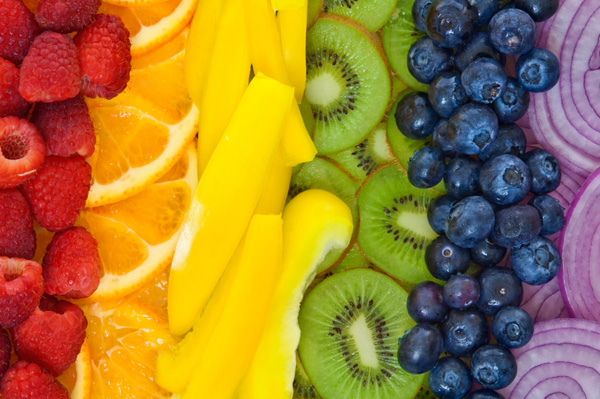Basically, we spent the whole day Saturday shopping, cooking, and waiting for stuff to cool so we could put it away. We ended up making about 25 meals for us (or 50 servings) of food that we can eat from now until we leave. We were both pretty exhausted by the end of the day, but are thrilled that we won't have to really cook again before we leave unless we want to.
 Why do I share this all with you? Because cooking can be healthy, cheap, tasty, and fast when you plan ahead and use fresh, nutrient rich ingredients. I have been saying that I will share two of my soup recipes for awhile and after our cooking extravaganza on Saturday, I am finally ready to release one!
Why do I share this all with you? Because cooking can be healthy, cheap, tasty, and fast when you plan ahead and use fresh, nutrient rich ingredients. I have been saying that I will share two of my soup recipes for awhile and after our cooking extravaganza on Saturday, I am finally ready to release one!This homemade grandma-style chicken noodle soup is amazing! You make everything from scratch, even the stock and the noodles. It's also really easy to make, and goes a long way. Like many soup recipes, it is very versatile and you can make it with different consistencies, flavors, and vegetables. With the cold weather starting to creep in, and with it colds, coughs, and stuffy noses, this recipe is definitely a good one to hang on to for those chilly winter nights when you just want to curl up under a blanket and get warm and cozy. I hope that you will love this recipe just as much as I do. Enjoy!
*Parts of this recipe are adapted from Tyler Florence's Chicken Noodle Soup Recipe.
Ingredients:
Makes 14, 1 & 1/2 Cup Servings
Stock:
- 1 Whole Chicken (free-range)
- 3 Stalks Celery (cut into large chunks)
- 2 Carrot Green Tops
- 2 Carrots (cut into large chunks)
- 2 Large White Onions (quartered, still attached to the root)
- 1 Medium Turnip (quartered)
- 1 Head of Garlic (cut in half)
- 1/4 Bunch Fresh Thyme
- 5-7 Sprigs Fresh Parsley
- 2 Bay Leaves
- 1 tsp Whole Black Peppercorns

- Lug of Extra Virgin Olive Oil
- 1 Medium Onion (chopped)
- 3 Garlic Cloves (minced)
- 2 Carrots (chopped to desired size)
- 3 Stalks of Celery (chopped to desired size)
- 4 Sprigs of Fresh Thyme (leaves only)
- 1 Bay Leaf
- *Shredded Chicken from Stock*
- *Stock made previously*
- *Egg Noodles* (recipe follows)
- 2 Cups Flour
- 3 Egg Yolks
- 1 Egg
- 2 tsp Salt
- 1/4-1/2 Cup Water
- Place whole chicken (minus the giblets) in a large stock pot along with the rest of the vegetables on the stove on medium high heat.
- Pour only enough water in to cover up the chicken and vegetables (about 2 & 1/2 - 3 quarts).
- Add the thyme, parsley, bay leaves, and peppercorns and bring to a boil.
- Once it boils, turn the heat down to medium-low and gently simmer for 1 & 1/2 hours, partially covered, until the chicken is fully cooked.
- Remove the chicken to the cutting board and once it cools remove the skin and bones and shred the meat. Set the shredded meat to the side to use later.
- Strain the stock and remove the vegetables, then set them to the side in a separate bowl.
- Let stock cool and skim the fat off the surface then set the stock to the side.
- Remove the root from the onions and puree onions, carrots, carrot tops, turnip, and celery in a blender or food processor.
- Add pureed vegetables back into the stock; whisk together and set aside for later.

- Place flour in a bowl, then, after making a well in the center, add in the egg yolks, egg and salt.
- Thoroughly mix with hands.
- Add the water in 1 Tbsp at a time, mixing after each addition.
- Stop adding water when you can roll the dough into a ball.
- On a floured surface, knead the dough until it is smooth and elastic (about 10 minutes)
- Cover and let it rest for 10 minutes.
- Divide into 4 equal parts.
- Using one part at a time, roll dough into a paper-thin rectangle. Keep remaining dough covered.
- Gently and loosely, roll rectangle into a spiral. Cut to desired thickness and unroll.
- Place strips to dry on a towel or wax paper. This will usually take about 2 hours.
- Break the strips into small strips when dry.
- Cook in boiling water with salt added for about 15-20 minutes until tender. Drain, then add to soup when soup is finished.
- In a stock pot, add oil and wait for it to heat. When heated, add in the onion, garlic, celery, carrots, thyme, and bay leaf.
- Cook and stir until vegetables are tender (about 6 minutes).
- Pour in the chicken stock and bring to a boil.
- Add in the shredded chicken and simmer for another few minutes to bring to the same temperature.
- (If you are going to serve all of the soup at once, stir in the already cooked egg noodles and cook for another minute or so)
- Separate into equal servings. Salt and pepper to taste and sprinkle with fresh parsley.
- (If freezing remaining soup, separate into freezer safe Tupperware to cool before placing in freezer. To defrost, simply place soup in a pot on the stove and add a little bit of water until it is the right consistency. When warm, and noodles are cooked, add the noodles into the soup).
Nutrition Facts (with noodles, per serving):
- Calories: 350
- Total Fat: 20 grams
- Sodium: 796 mg
- Potassium: 189 mg
- Sugars: 3 grams
- Protein: 21.2 grams
- Vitamin A: 51.4%
- Vitamin C: 16%
- Calcium: 3%
- Copper: 4%
- Folate: 5.5%
- Iron: 13%
- Magnesium: 4%
- Manganese: 10%
- Phosphorus: 4.5%
- Selenium: 12%
- Total cost is somewhere between 13-15 dollars.
- When you divide this by how many servings you get (14), it's about 1 dollar per serving. Definitely a lot cheaper than a frozen dinner or fast food.
- When making the egg noodles, don't just throw away the egg whites from the yolks you have to use. Save the egg whites in a bowl in the fridge and use them to make my healthy and tasty bran muffins. Here is the recipe: Michelle's Healthy and Tasty Bran Muffins
- The reason I don't add the noodles into the soup when I cook it is because we freeze all but two servings of the soup (which we eat right away). The noodles will get soggy if they are cooked, frozen and reheated again. The easiest thing to do is to cook as many noodles as you need per serving separately, and then add them into the reheated soup. This will keep the noodles from getting soggy, and will also make sure that you get the right amount of noodles in your serving of soup.
- While the stock is cooking you can make your noodles. Don't worry, if they're not dry by the time you need to boil them, you will still be able to cook them the same way. Just be sure to wait for the remaining noodles to dry before you put them away in a bag to store them.
- The stock and soup are very versatile. You can add whatever else in that you want to make it taste the way you like it. The essentials for any chicken stock however are chicken, carrots, celery, onion, garlic, spices, and herbs. So while you can add other things to the stock, I wouldn't recommend removing any of these ingredients from it or else it will loose its flavor.
- You do not have to puree the left over vegetables from the stock if you do not wish to do so. Pureeing the vegetables adds A LOT more flavor to the stock though, so I would highly recommend it. You can also play around with how much of the vegetables you want to puree and which ones to give it a different consistency and flavor.
- You can also use rice instead of noodles to make it healthier. About half of the time we eat this soup I will make up some brown rice to toss in.
- As always, it is much better to buy organic vegetables if you can get them.
- For one, you are cooking from scratch and it is pretty hard to beat that. Everything from the stock to the noodles, you will be creating yourself. This way you can know for sure what you have put in it, and how much of what you have put in it.
- You get to develop the flavors of the chicken naturally and cook it in a healthy way. By boiling the chicken with vegetables and letting it sit in its own juices instead of cooking it with oil in a frying pan, it becomes less fatty.
- This recipe uses a ton of vegetables that are terrific for you. If you make the recipe just as I have written it you will be getting carrots, carrot greens, turnip, onions, celery, parsley and thyme. You are getting them directly in the soup, but also in the stock and the puree if you add it to the stock. This bowl of soup is packed full of nutrients. Especially in the winter, this soup can help keep you healthy!
- Carrots are great because they are high in carotenoids and as such have many different health benefits. High carotenoid intake has been associated with a decrease of up to 50 percent in bladder, cervix, prostate, colon, larynx, and esophageal cancer as well as up to a 20 percent decrease on postmenopausal breast cancer. Carrots are also good for your eyes because they have the carotenoids lutein and zeaxanthin which can prevent cataracts and keep your eyes from degenerating. These carotenoids also break down to vitamin A in the body which is an antioxidant and immune system booster and can also help you see better in dim lighting. By adding the carrot greens to the puree you probably won't be able to taste them but you will get the potassium and protein they provide.
- Celery is good because it helps lower high blood pressure. It also contains silicon which is good for bone health. Celery can also help stop the growth of cancer cells.
- Onions help to build strong bones and can reduce death from heart disease by 20%. It can also help relieve asthma.
- Turnips are an incredibly healthy vegetable. One cup of cooked turnips only has 35 calories but has 3 grams of fiber, 250 mg of potassium, 18 mg of vitamin C, and 51 mg of calcium. As such they are very good for bone health.
- Garlic lowers cholesterol and prevents blood clots. Garlic also has anti-cancer properties and can even help fight the common cold. Also, it can help with blood pressure. It has recently been discovered that garlic can help with weight control.
- Parsley can help fight cancer.
- Thyme contains antioxidants as well as aids with digestion. It can even relieve chest and respiratory problems like coughs or bronchitis.
- Most of the information regarding the vegetables and herbs was taken from The 150 Healthiest Foods on Earth by Jonny Bowden.
The Tummy Temple Facebook Page
As always, thanks for reading and eating along with me!



































